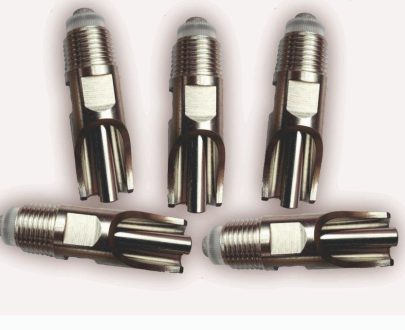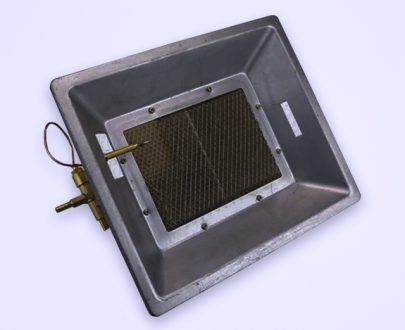Seedling trays are specialized containers designed for germinating seeds and nurturing young plants in a controlled environment. Typically made of plastic, these trays feature multiple small compartments called cells, each capable of holding a single seed or a small group of seeds.
The cells are to be filled with nutrient-rich potting soil, coco peat, peatmoss, or a soilless growing medium. Seedling trays provide a stable and protective environment for seeds to sprout and develop into seedlings before they are transplanted into the garden, farms or larger pots. These trays are widely used in gardening, horticulture, and agriculture, allowing for efficient and organized seed starting processes.
Benefits of Using the Seedling Tray
- Uniform Germination: Seedling trays provide consistent growing conditions, ensuring uniform germination of seeds due to controlled temperature, humidity, and soil moisture.
- Space Efficiency: The compact design of seedling trays allows for efficient use of space, enabling gardeners to start a large number of seeds in a limited area, making them ideal for both small-scale and commercial cultivation.
- Easy Transplantation: Seedlings grown in trays develop strong root systems, making transplanting them into the garden or larger pots easier and less stressful for the plants.
- Protection from External Elements: The plastic trays act as a barrier, protecting delicate seedlings from harsh weather conditions, pests, and diseases. Many trays come with lids or domes, creating a mini greenhouse effect that shields the seedlings from external elements.
- Prevents Root Disturbance: Individual compartments in seedling trays prevent root entanglement and disturbance during transplantation. Each seedling can be removed without damaging the roots of neighboring plants.
- Cost-Effective: Plastic seedling trays are relatively inexpensive, making them a cost-effective choice for both amateur gardeners and professional growers. They are reusable, reducing the need for constant repurchase.
- Optimal Drainage: Most seedling trays have drainage holes at the bottom, ensuring proper drainage and preventing waterlogged soil, which can lead to root rot.
- Easy Monitoring: Transparent plastic trays allow easy monitoring of seedling growth without disturbing the plants. Gardeners can observe root development and identify any issues promptly.
- Customizable: Seedling trays come in various sizes and configurations, allowing gardeners to choose trays that suit the specific needs of their plants and gardening space.
- Reduces Transplant Shock: Seedlings started in trays experience less transplant shock since their roots are well-established and undisturbed during the transplantation process. This leads to higher survival rates and healthier plants in the garden.
Characteristics of the Nursery Seedling Trays
- Durable Material: Made from sturdy and durable plastic materials, ensuring longevity and reusability.
- Multiple Compartments: Divided into individual cells, allowing for the cultivation of multiple seedlings simultaneously and preventing root entanglement.
- Variety of Sizes: Available in various sizes, catering to different types of plants and accommodating varying quantities of seeds.
- Drainage Holes: Equipped with drainage holes at the bottom of each compartment, ensuring proper water drainage and preventing waterlogging.
- Easy Handling: Lightweight and easy to handle, facilitating efficient seed sowing and transplanting processes.
- Stackable Design: Many trays have a stackable design, allowing for convenient storage, especially in nurseries or garden centers with limited space.
- UV Resistant: Resistant to ultraviolet (UV) radiation, ensuring that the trays do not degrade or become brittle when exposed to sunlight.
- Reusable: Designed for multiple uses, minimizing environmental impact and reducing costs over time.
- Customizable: Some trays come with adjustable compartments or modular designs, providing flexibility to adapt to different plant sizes and growth stages.
Steps on How to Use the Seedling Trays to Grow and Nurse Your Crops:
- Choose the Right Seeds: Select seeds of the plants you want to grow, considering the appropriate planting time for your region and the tray’s size.
- Prepare the Seedling Tray: Clean the seedling tray thoroughly to remove any debris or old roots from previous use. Also ensure the tray has drainage holes at the bottom to prevent waterlogging.
- Fill Compartments with Growing Medium: Fill each cells of the tray with a high-quality seed starting mix, leaving a little space at the top. Avoid using garden soil, as it may contain pests or diseases. Preferably use peatmoss, potting soil or cocopeat.
- Plant the Seeds: Plant the seeds according to the recommended depth specified on the seed packet. Generally, small seeds are lightly pressed into the soil, while larger seeds are buried to their recommended depth.
- Label the Trays: Place labels or markers in the trays to identify the type of seeds planted in each cell of the tray. This step is crucial, especially if you are growing multiple plant varieties.
- Water the Seeds: Use a gentle spray or mist to water the seeds evenly. Ensure that the soil is moist but not waterlogged. A spray bottle can help prevent disturbing the seeds and the growing medium.
- Provide Proper Light and Temperature: Place the tray in a warm, well-lit area. Most seeds require consistent warmth and indirect sunlight for germination. Consider using a seedling heat mat to maintain an optimal temperature.
- Monitor and Water Regularly: Check the trays daily to ensure the soil remains moist but not waterlogged. Water gently if needed. Remove the cover once seedlings start to emerge, ensuring they receive adequate airflow.
- Transplant Seedlings: Once the seedlings have developed their first true leaves and are sturdy enough to handle, transplant them into larger pots or directly into your garden or farm, following the specific requirements of the plant species.
- Harden Off Seedlings (If necessary): If you are transplanting seedlings outdoors, gradually expose them to outdoor conditions (sunlight, wind, etc.) over a period of several days. This process, known as hardening off, helps seedlings acclimate to their new environment.
By following these steps, you can effectively use seedling trays to start your seeds and nurture healthy young plants for your garden or nursery.













Customer reviews
4 reviews for Seed/Seedling Tray for Nursery -104 Cells and 200 Cells
(verified owner)
(verified owner)
(verified owner)
200 hole ordered but supplied 128holes
(verified owner)
It’s serviingredients the purpose is got it for very well.
Only logged in customers who have purchased this product may leave a review.